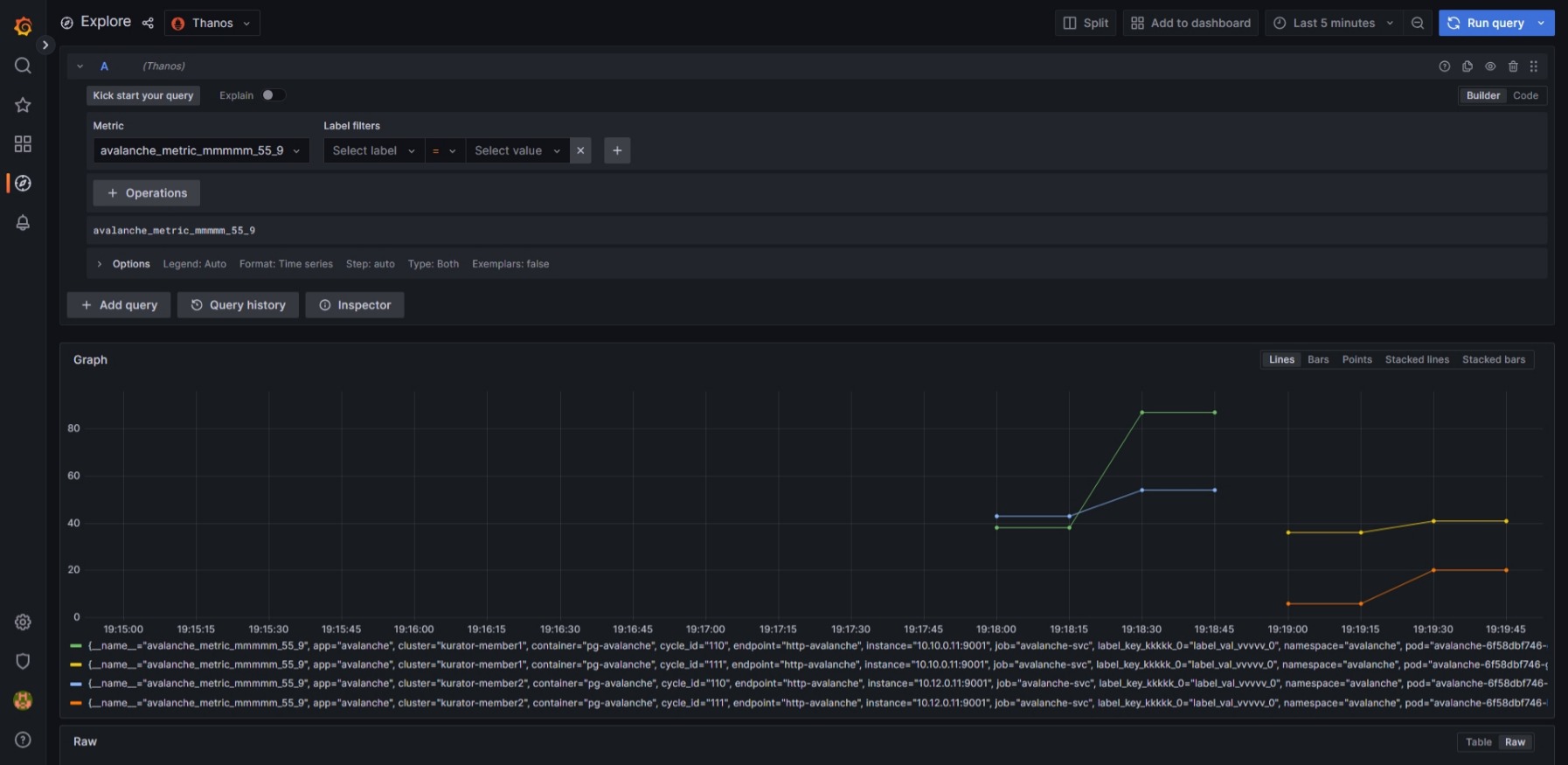Enable multi cluster Monitoring with fleet
In this tutorial we’ll cover the basics of how to use Fleet to manage metirc plugin on a group of clusters.
Architecture
Fleet’s multi cluster monitoring is built on top Prometheus and Thanos, the overall architecture is shown as below:
Prerequisites
-
Setup Fleet manager by following the instructions in the installation guide.
-
Kurator metric depends on Thanos, Object Storage is required for Thanos. In the task, Minio is used, setup by the installation guide.
-
Running the following command to create two secrets to access attached clusters.
Create a fleet with metric plugin enabled
After a while, we can see the fleet is ready:
Thanos and Grafana are installed correctly:
Apply more monitor settings with Fleet Application
Run following command to create a avalanche pod and ServiceMonitor in the fleet:
Query metric from Grafana
After a while, you can go to grafana datasource page query avalanche metric, it will looks like following:
Cleanup
Delete the fleet created
Uninstall fleet manager:
IMPORTANT: In order to ensure a proper cleanup of your infrastructure you must always delete the cluster object. Deleting the entire cluster template with kubectl delete -f capi-quickstart.yaml might lead to pending resources to be cleaned up manually.
Uninstall cluster operator:
Optional, clean CRDs:
Optional, delete namespace:
Optional, unintall cert manager:
Optional, shutdown cluster:
Feedback
Was this page helpful?
Glad to hear it! Please tell us how we can improve.
Sorry to hear that. Please tell us how we can improve.

